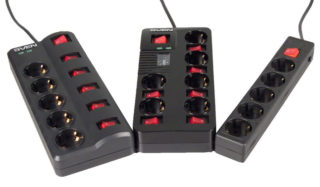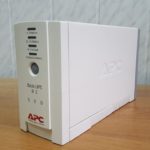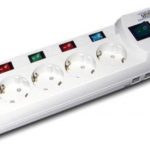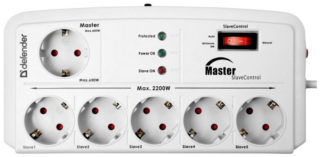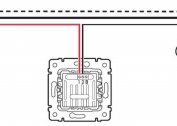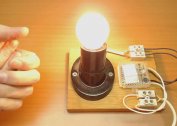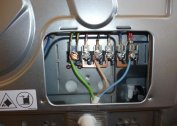Almost every apartment has a refrigerator, washing machine and other household appliances. These devices simplify life, you want to lose such help the least. Due to sudden changes in voltage and extraneous noise in the network, the equipment may fail. In the first case, everything happens instantly, and in the second, the process lasts a long period of time. To protect yourself from unnecessary waste, you need to get reliable protection in the form of a surge protector or stabilizer.
Household appliance protection
Engineers of modern household appliances tilt towards compactness and efficient energy consumption. The approach has a minus - sensitivity to voltage drops. As a result, the owner receives an unpleasant repair bill and damaged nerves.
The standard voltage in the network should be 220V, GOST provides an error of 10%. In theory, the network should not be less than 198 and more than 240 V, but in practice, the network jumps from 35 to 400 volts. Even the equipment protected from differences cannot sustain such loading.
When a power surge occurs, the refrigerator and the computer are the first to fail. The power supply provides minimal protection for such situations. More often than not, everything ends with burnt coils and swollen capacitors. The same goes for flat-panel TVs and monitors.
With small appliances, everything is simple, but with refrigerators and washing machines, things are worse. If the equipment was online at the time of the overvoltage, the motor often fails. Burnt parts must only be replaced. As a result, repairs are much more expensive than a conventional voltage stabilizer or filter.
Protection devices
Power surges can cause great material damage, so it’s important to choose a quality product. Engineers offer several options that differ in principle of operation and cost. There are three main types of surge protection:
- uninterrupted power supply;
- Voltage regulator;
- power line filter.
- Uninterruptible (UPS)
- Voltage regulator
- 4-point surge protector
UPS (uninterruptible power supply), great for use in conjunction with a desktop computer. A capacious battery is able to extend the operation of the monitor and system unit from 3 to 30 minutes. Duration of operation depends on the capacity and wear of the battery. But the battery is expensive and quickly goes down. Replacement is done on average once a year.
The stabilizer does not provide expensive consumables. After a strong jump, only blown fuses will have to be replaced. Of the minuses - a limited number of connected devices and a high price. The device will not help to save data during voltage loss. At the same time, it protects the expensive parts of connected household appliances.
The surge protector is a relatively budget option with great features. The principle of a standard device is to trigger a button that cuts off the supply of voltage during a large jump. This type of protection works as a fuse. Some models are capable of collecting noise, which has a positive effect on sensitive technology. The higher the cost of the product, the better the performance.
Features of work
Each filter is equipped with an automatic machine that cuts off the power supply when a short circuit or critical high voltage. Extenders are also capable of filtering out noise in the mains. Such interference may be caused by a generator, grinder or welding machine.Only good devices can eliminate noise. Cheap extension cords are equipped with simple machines.
The filter from interference in the mains will work correctly only with a grounded cable connected to it. The principle of operation is to reset all interference to ground. Thus, the life of important SMD elements of sensitive equipment will be extended.
Almost all surge protectors have one circuit design. At the entrance there is a backlit switch, a varistor and LC filters. The principle of operation of the varistor is that when a jump occurs, it overheats and fails, breaking the circuit. LC filters are a cable-wrapped ferrite core that picks up high frequencies and evens out the AC sine wave.
Filter or stabilizer
To determine which option is best, you need to familiarize yourself with the positive and negative sides of the devices.
The voltage regulator, unlike an extension cord with a fuse with protection against surges, has a complex multi-stage system. Some models are capable of real-time display of incoming voltage and converted.
If the voltage constantly decreases (the light blinks or dims), the surge protector will not help. A modern extension cord with a built-in input voltage stabilizer is capable of not only damping high surges, but also raising a noticeable drawdown.
A device of sufficient power can be put on the whole house and thereby protect all electrical appliances. In the case of surge protectors, this is not possible.
At high power surges, the stabilizer performs a smooth shutdown. This approach helps preserve all security features. The filter is the opposite. When a sharp jump fuse is guaranteed to blow. As a result, you have to disassemble the case and make a replacement, or buy a new device.
An extension cord with a filter and a stabilizer are devices of different price categories. If you need reliable protection at all costs, an expensive converter will be the best option. It is recommended to put the stabilizer on expensive equipment with a long service life.
For small chargers or inexpensive equipment, cheap line filters are suitable. They will work reliably in an emergency, as well as remove extraneous noise. Such a filter copes with high jumps. Therefore, it is better to install it where there is no drawdown of the mains.
